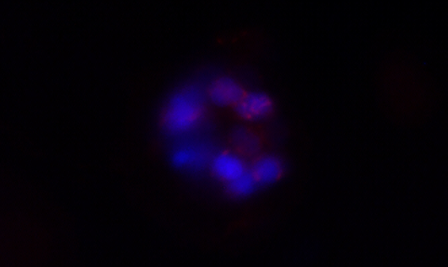Neuromasts in zebrafish embryos (Danio rerio) are in direct contact with their environment and can therefore be affected by neurotoxic substances
Neuromasts are mechanoreceptors, which are very sensitive to water movement and provide information about the location and movement of the fish body, as well as about the presence and movements of surrounding organisms (conspecifics, predators). In fish, neuromasts are organized in a structured network along the head and body and are referred to as the lateral line system. Exposure to neuroactive drugs, for example, can alter their development and activity, which in turn affects the fitness of the organism. In zebrafish (Danio rerio), neuromast development can be studied by staining 4-d-old embryos with Dapi (4′,6-diamidine-2-phenylindole) and Daspei (2-(4-(dimethylamino)styryl)-N-ethylpyridinium iodide). Nine neuromasts were selected for evaluation, with six located on the head and three along the body. By comparing the activities in treated and untreated fish, neurotoxic effects of pharmaceuticals on neuromasts can be visualized.
Photo credit: Prof. Thomas Braunbeck, UHEI







